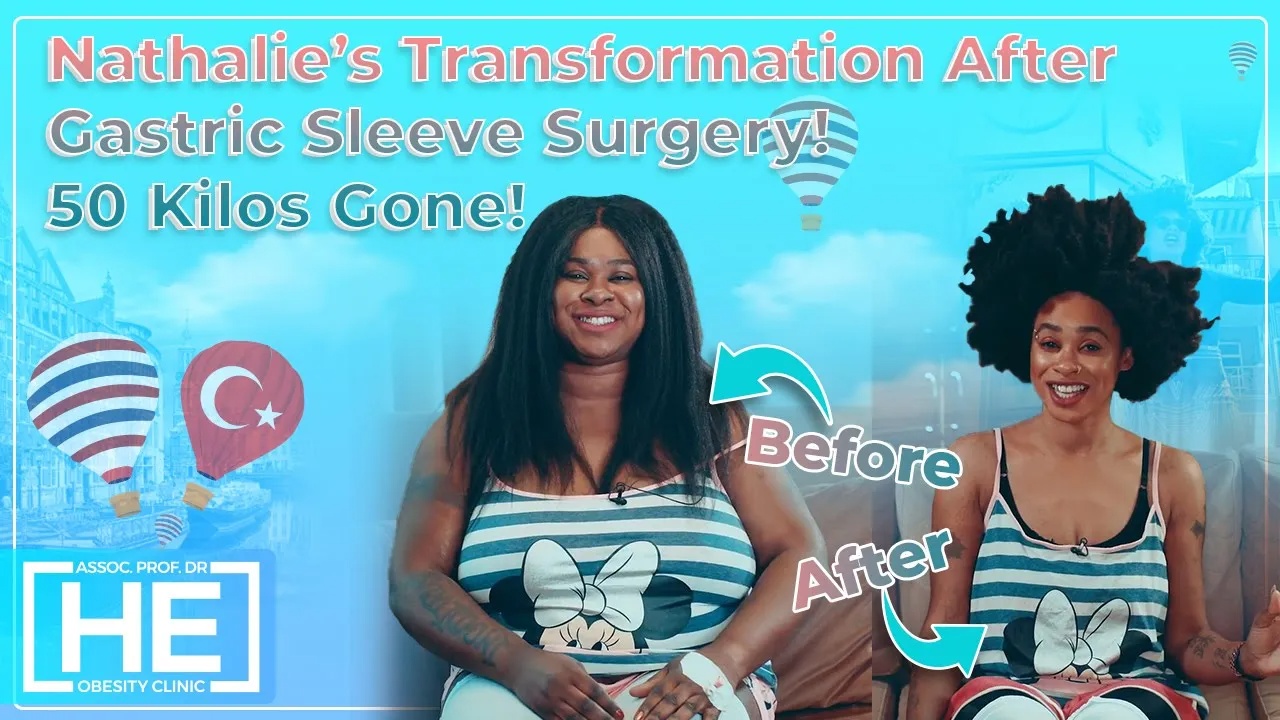Cosmetic Options for Minimizing Sleeve Gastrectomy Scars
If non-invasive scar management techniques are not providing the desired results, there are cosmetic options available to minimize sleeve gastrectomy scars:
1. Scar Revision Surgery
Scar revision surgery involves removing the old scar tissue and creating a new, less visible scar. This procedure can be performed by a plastic surgeon and may help improve the appearance of sleeve gastrectomy scars.
2. Dermabrasion
Dermabrasion is a technique that uses a rotating brush or diamond wheel to remove the top layer of skin, allowing new skin to grow in its place. This procedure can help reduce the appearance of scars and improve skin texture.
3. Micro-needling
Micro-needling involves creating tiny punctures in the skin using a device with fine needles. This stimulates collagen production and can help improve the appearance of sleeve gastrectomy scars over time.
Emotional Impact of Sleeve Gastrectomy Scars and Coping Strategies
It's important to acknowledge the emotional impact sleeve gastrectomy scars can have on individuals. Some people may experience self-consciousness, body image concerns, or anxiety related to their scars.
If you're struggling with the emotional aspect of sleeve gastrectomy scars, consider these coping strategies:
1. Seek Support
Reach out to support groups, both online and offline, where you can connect with others who have undergone similar procedures. Sharing experiences and feelings with others who understand can provide a sense of comfort and validation.
2. Practice Self-Care
Engage in activities that promote self-care and boost your self-esteem. This can include exercise, hobbies, meditation, or seeking professional help if needed.
3. Focus on the Positive
Remember the reasons why you chose to undergo sleeve gastrectomy in the first place. Shift your focus to the positive changes and improvements in your health and well-being.
While sleeve gastrectomy does leave scars, they can be effectively minimized and hidden. By following scar care techniques, choosing strategic clothing, and considering cosmetic options, you can feel confident and comfortable in your body after surgery.
Remember, the decision to have gastric sleeve surgery should always be based on informed choices, and scars don't have to stand in your way of achieving a healthier lifestyle. Embrace the journey, celebrate your accomplishments, and let your scars become a symbol of your strength and resilience.
Does Gastric Sleeve Surgery Leave Scars?
Does gastric sleeve surgery leave scars? Gastric sleeve surgery, also known as sleeve gastrectomy, is a popular weight loss surgery that involves removing a large portion of the stomach to create a smaller, sleeve-shaped stomach. This procedure is performed laparoscopically, which means it is minimally invasive and leaves smaller scars compared to traditional open surgery.
Many people considering gastric sleeve surgery are concerned about the potential scarring that may result from the procedure.
Does gastric sleeve surgery leave scars? Yes, gastric sleeve surgery does leave scars, as it is a surgical procedure that involves making incisions in the abdomen to remove a portion of the stomach. However, the scarring from gastric sleeve surgery is typically minimal and can be well-concealed.
The incisions made during gastric sleeve surgery are small, usually less than an inch in length, and are strategically placed to minimize their visibility. Additionally, advances in surgical techniques and technology have led to smaller incisions and improved wound healing, further reducing the appearance of scars.
What Do Scars from Gastric Sleeve Surgery Look Like?
The appearance of scars from gastric sleeve surgery can vary from person to person, depending on factors such as skin type, age, and individual healing capacity. In general, the scars are small and linear, similar to those from other laparoscopic procedures.
Initially, the scars may appear red or pink and slightly raised, but over time they tend to fade and flatten. Most patients find that their scars become significantly less noticeable within the first year after surgery. While some individuals may develop hypertrophic or keloid scars, these are relatively rare following gastric sleeve surgery.
Managing Scars After Gastric Sleeve Surgery
While the scars from gastric sleeve surgery typically heal well on their own, there are steps that patients can take to help minimize their appearance and promote optimal healing. Here are some tips for managing scars after gastric sleeve surgery:
1. Follow Your Surgeon's Instructions: It is crucial to follow your surgeon's post-operative care instructions to ensure proper wound healing. This may include keeping the incision sites clean and dry, avoiding strenuous activities that could strain the incisions, and attending follow-up appointments as scheduled.
2. Use Scar-Reducing Products: There are various over-the-counter and prescription products available that claim to reduce the appearance of scars. These may include silicone-based gels or sheets, vitamin E oil, or specialized scar creams. It is important to consult with your surgeon before using any scar-reducing products to ensure they are safe and appropriate for your specific situation.
3. Protect Your Scars from the Sun: Direct sunlight can cause scars to darken and become more noticeable. It is essential to protect your scars from the sun by applying sunscreen with a high SPF or covering them with clothing when exposed to sunlight.
4. Massage the Scars: Gently massaging the healed incisions with moisturizer or scar-reducing cream can help improve blood flow to the area and prevent the formation of adhesions, which can make scars appear more prominent.
5. Consider Laser Therapy: In some cases, laser therapy may be recommended to further reduce the visibility of scars. This non-invasive treatment can help soften and flatten scars, making them less noticeable.
It is important to note that while these tips may help improve the appearance of scars after gastric sleeve surgery, not all scars can be completely eliminated. However, most patients find that their scars become significantly less noticeable over time and are a small trade-off for the life-changing benefits of weight loss achieved through gastric sleeve surgery.
How can I hide my gastric sleeve scars?
How can I hide my gastric sleeve scars? Gastric sleeve surgery, also known as sleeve gastrectomy, is a popular weight loss procedure that involves the removal of a large portion of the stomach, resulting in a smaller, sleeve-shaped stomach. While this surgery can lead to significant weight loss and improved health, it also leaves behind scars that some patients may wish to minimize or conceal.
If you're considering gastric sleeve surgery or have already undergone the procedure and are concerned about the appearance of your scars, there are several options available to help you minimize their visibility. In this article, we'll explore some effective ways to hide gastric sleeve scars and improve the overall appearance of your skin.
1. Silicone Scar Sheets: Silicone scar sheets are a popular and effective option for reducing the appearance of scars, including those resulting from gastric sleeve surgery. These sheets are made from medical-grade silicone and are designed to be placed directly on the scarred area. They work by creating a protective barrier over the scar, which helps to hydrate the skin and regulate collagen production, leading to flatter, lighter, and less noticeable scars over time.
When using silicone scar sheets, it's important to follow the manufacturer's instructions for application and wear time. Typically, these sheets should be worn for several hours each day and replaced every one to two weeks. With consistent use, many patients have seen significant improvement in the appearance of their scars within a few months.
2. Scar Creams and Gels: There are numerous over-the-counter scar creams and gels available that claim to reduce the appearance of scars. These products often contain ingredients such as onion extract, vitamin E, and various botanical extracts that are believed to promote skin healing and reduce inflammation. While the effectiveness of these products can vary from person to person, some individuals have reported positive results when using scar creams and gels to minimize gastric sleeve scars.
When choosing a scar cream or gel, look for products that are specifically formulated for use on surgical scars and have been clinically tested for safety and efficacy. It's also important to be patient, as it may take several weeks or even months of consistent use before you begin to see noticeable improvements in the appearance of your scars.
3. Makeup: For a quick and temporary solution to hiding gastric sleeve scars, many individuals turn to makeup. There are several types of makeup specifically designed to conceal scars and other skin imperfections, including heavy-duty concealers, color-correcting creams, and setting powders. When using makeup to hide scars, it's important to start with clean, moisturized skin and choose products that are non-comedogenic and suitable for your skin type.
To effectively camouflage gastric sleeve scars with makeup, begin by applying a thin layer of primer to the scarred area to create a smooth base. Next, use a color-correcting cream or concealer that matches your skin tone to cover the scar, gently blending the product into the surrounding skin. Finish by setting the makeup with a translucent setting powder to ensure long-lasting coverage.
4. Laser Therapy: For individuals seeking more intensive treatment options for their gastric sleeve scars, laser therapy may be worth considering. Laser treatments work by targeting the scar tissue with concentrated beams of light, which helps to break down the excess collagen that contributes to raised or discolored scars. Over time, this process can lead to smoother, more even-toned skin with reduced visibility of scars.
It's important to note that laser therapy for scar reduction should only be performed by a qualified dermatologist or plastic surgeon with experience in treating surgical scars. Depending on the severity of your scars and your skin type, multiple laser sessions may be required to achieve optimal results. While laser therapy can be an effective option for minimizing gastric sleeve scars, it's essential to weigh the potential risks and benefits with a qualified medical professional before undergoing treatment.
5. Clothing and Accessories: In addition to topical treatments and cosmetic solutions, choosing the right clothing and accessories can also help conceal gastric sleeve scars. For scars located on the abdomen or torso, consider wearing clothing with strategic draping, ruching, or patterns that draw attention away from the scarred area. High-waisted bottoms, flowy tops, and structured jackets can all help minimize the visibility of scars while allowing you to feel comfortable and confident in your clothing choices.
Similarly, accessories such as scarves, statement jewelry, or stylish wraps can be used to divert attention from gastric sleeve scars and draw focus to other areas of your body. By experimenting with different clothing styles and accessories, you can find creative ways to showcase your personal style while minimizing the visibility of your scars.















COMMENTS FROM REAL PATIENTS
“An exceptional experience from start to end! Prof H. Erdem, doctors,nurses,nutritionists, dieticians, co-ordinaters and all the rest of the staff are simply amazing. They attend patients with patience and give attention to every query they have.Their lovely smiles and warmth was more then enough to make my stay an exceptional one. Now I look forward to the weightloss journey with their professional guidance. Heartfelt thanks to all! Will surely recommend.”
Posted on
Trustpilot“Very good before and aftercare. Lots of pre and post op information and support. Team were responsive to any issues that arose and made me feel safe. Each day that I was in hospital the team came to check on me (sometimes 3 times in a day), in addition to the core checks by the nurses. Pre and post op I was put in a WhatsApp group with the surgical team for additional and personal support. There was also a group for other post surgery people to support and uplift each other. Dr Hasan and team gave me such care that without reservation I give my recommendation. Even now 3 years later, I'm still having messages of support and encouragement from the patient liaison Tugce.”
Posted on
Trustpilot“I have just returned from having a gastric sleeve. I cannot fault the care and service I've had from the whole team at Dr. HE obesity clinic. I was given all the information I needed before I went and all my questions were answered, no matter what time I messaged. When I arrived at the hospital everyone was so friendly and caring. The hospital was clean and hygienic. My room was cleaned every day while I was there. I felt listened too and cared for throughout my stay. Everyone is so helpful. Another positive is they are there for you when you return back to the UK, to answer any questions you may have and support you when needed. Excellent service all round.”
Posted on
Google"After struggling with my weight for years, I decided to try the Allurion Balloon at GST Clinic in Turkey. The cost was much more affordable than back home, and the care I received was top-notch. From the moment I arrived, the team made me feel comfortable and informed. Three months later, I've lost a significant amount of weight and feel fantastic. I highly recommend the Allurion Gastric Balloon treatment here!"
Posted on
Google"I had my Allurion Gastric Balloon placed at GST Clinic, and it was the best decision I ever made. The procedure was quick, and there was no downtime. The staff were incredibly supportive, providing me with all the guidance I needed for a successful treatment. The cost was transparent, and there were no hidden fees. It’s been a life-changing experience!"
Posted on
Google"Choosing the Allurion Balloon from GST Clinic was a pivotal moment in my weight loss journey. The cost of the Allurion Balloon in Turkey was reasonable, and the service at the clinic was exceptional. They provided a comprehensive package that included follow-up care and nutritional advice, which really helped me make the most out of the 16 weeks with the balloon."
Posted on
Trustpilot"The Allurion Balloon cost in Turkey at GST Clinic was worth every penny. The team not only helped me with the medical procedure but also supported me emotionally throughout my journey. Losing weight has never felt this manageable, and I have GST Clinic to thank for this new lease on life."
Posted on
star"My experience with the Allurion Balloon at GST Clinic was nothing short of amazing. The staff were professional and caring, and the price of the treatment was clear from the start. The balloon helped me control my eating habits, and I saw results faster than I anticipated. I would definitely recommend GST Clinic to anyone considering the Allurion Balloon in Turkey."
Posted on
Trustpilot